 0086-13685249056
0086-13685249056
 info@cnebikes.com
info@cnebikes.com
- dealers

- feedback

- download



Since Faraday invented the world's first motor in the 1930s, many people have been trying to apply the motor to bicycles.
The first person to do this was Gustave Trouvé in France.
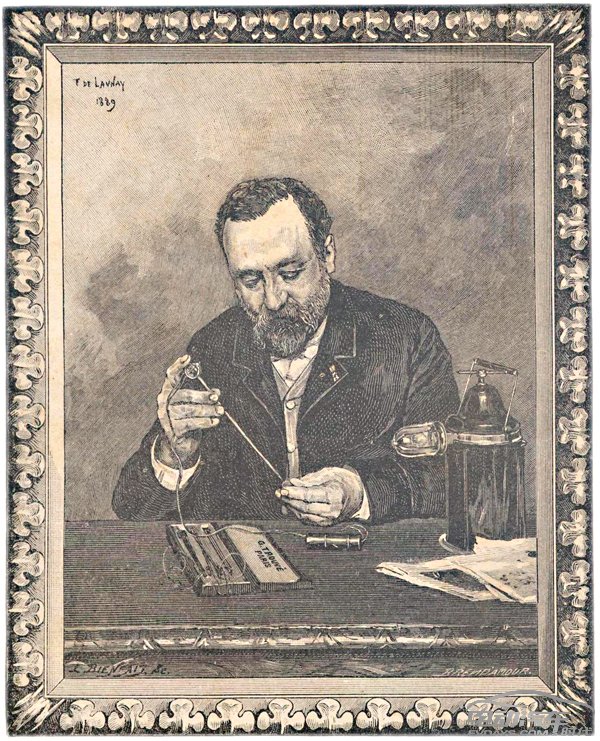
In 1881, Gustav Truff successfully transformed an electric tricycle
The electric tricycle was exhibited in Paris at the time, becoming the world's recognized inventor of the first electric car, and he is
also known as the father of electric cars
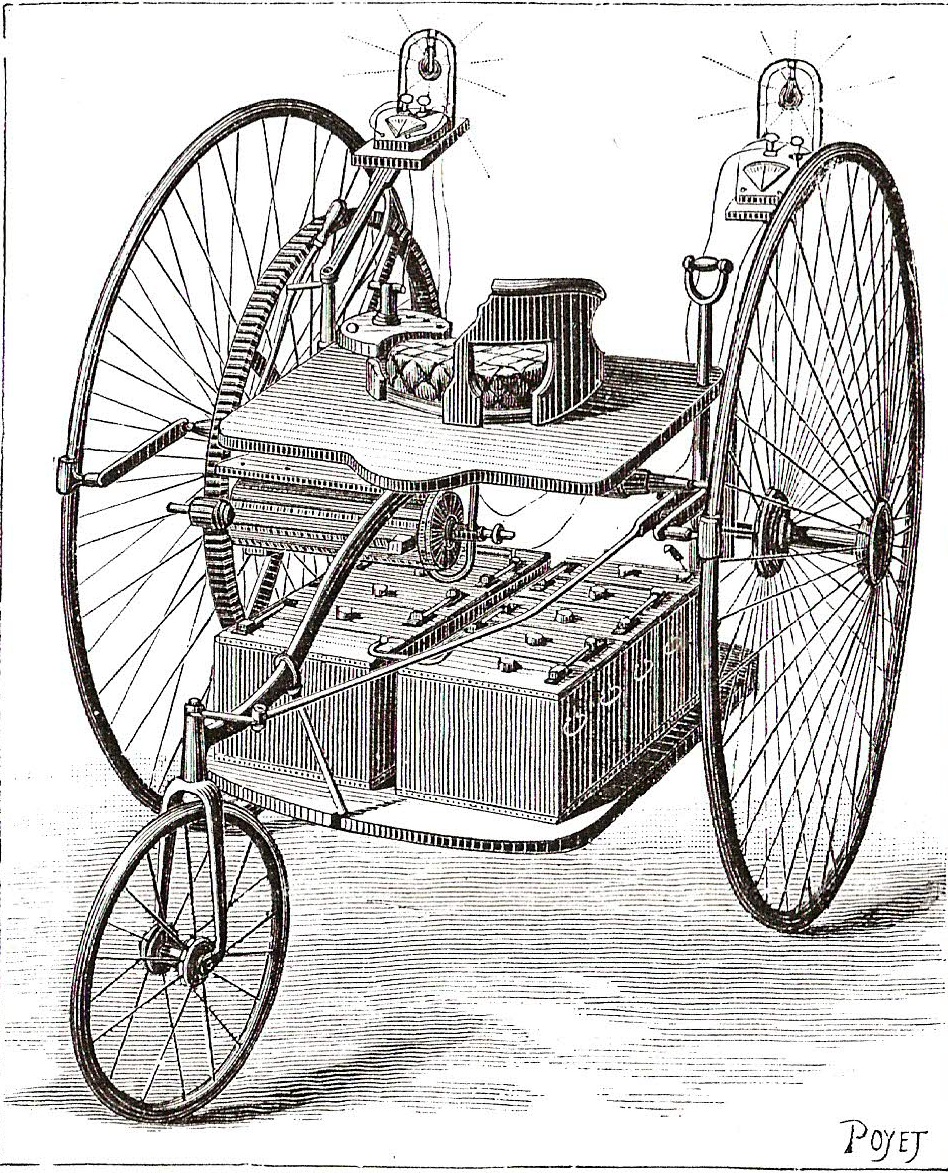
In 1892, M.Graffigny invented the pedal electric tricycle
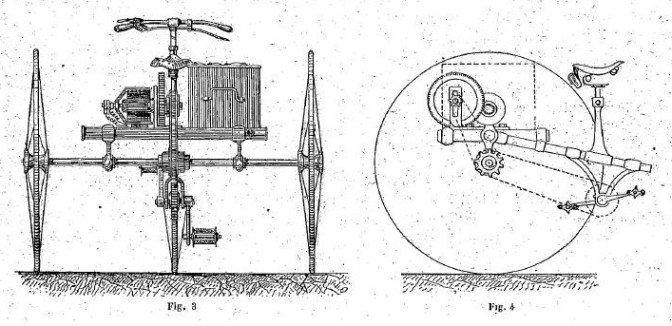
The picture above is the electric tricycle invented by M.Graffigny in 1892. The output gear of the motor is connected with the differential device
of the human drive wheel through a series of reduction gear sets. Therefore, this tricycle can be driven by the rider stepping on the pedal , can
also be driven by an electric motor. On the right side of the vehicle is a box of 24 sets of batteries, and on the left side is a nearly 10kg motor unit.
The weight of the whole vehicle is 77kg. If there is no electricity, you will really cry.
In 1895, Ogden Bolton (Ogden Bolton) invented the direct drive rear hub electric bike
Even so, to be correct, the bikes invented by the above two masters are more like electric bike than electric bihttps://www.cnebikes.com/product_category/Electric-Bike.htmlhttps://www.cnebikes.com/product_category/Electric-Bike.htmlhttps://www.cnebikes.com/product_category/Electric-Bike.htmlcycles. Fourteen years later, inspired
by them, Ogden Bolton invented the direct-drive rear-hub electric bike. As shown in the picture:
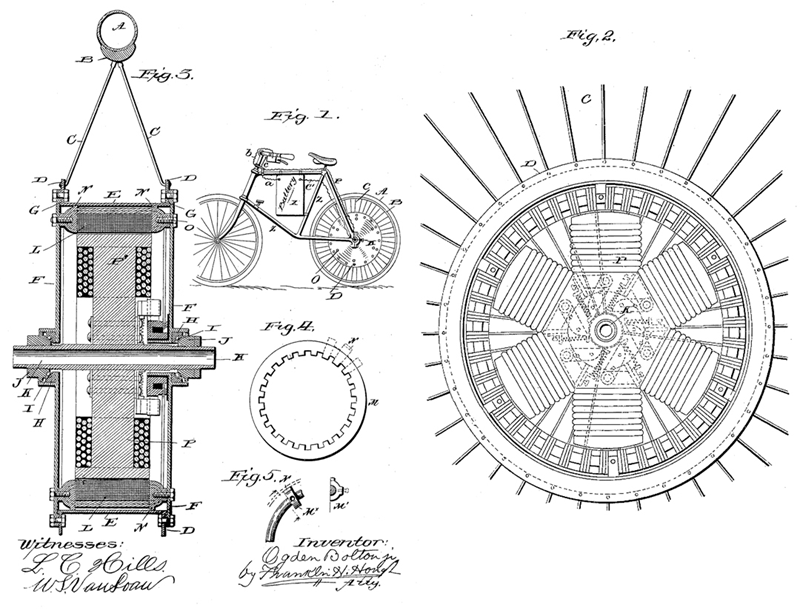
These two electric vehicles do not have a driving component for human pedaling, and adopt pure electric mode. There is a lever on the
handlebar to control the motor, and the battery is located in the front triangle of the frame. The rear hub is loaded with a permanent
magnet DC outer rotor brushed motor. From the motor section on the right, we can see six sets of coils inside the motor and a rotor
magnetic ring on the outside, and there are six pawls in the center. It is very similar to the structure of the modern tower base, and
this design can be said to be quite advanced more than 130 years ago.
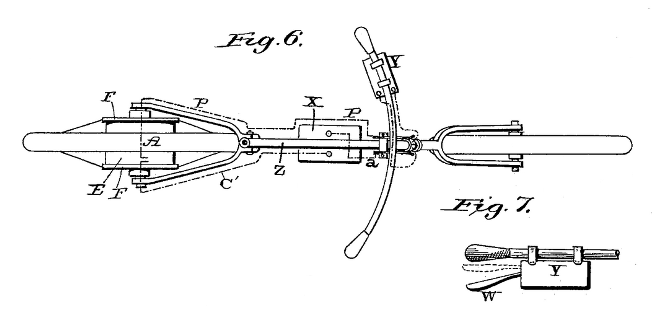
1897, Hosea W. Libbey, the first mid-motor electric bicycle
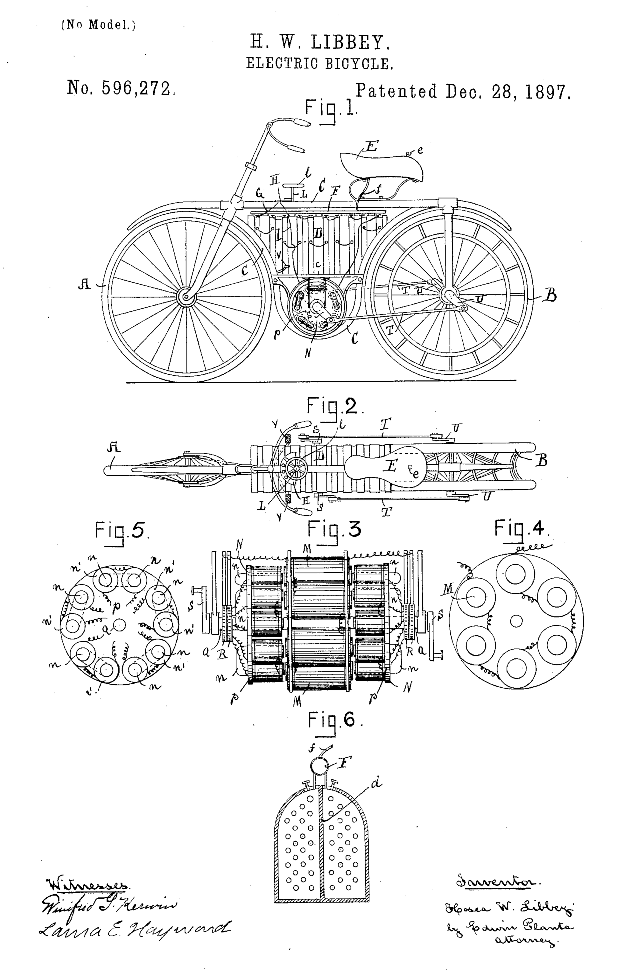
In 1897, inventor Hosea W. Libbey designed an electric bicycle with a mid-mounted motor. This electric bike has no pedals and is
driven by connecting rods. What's even more peculiar is that it uses a double-stator permanent magnet motor. The motor is shaped
like a hamburger with stators on both sides, and the rotor is sandwiched in the middle, connecting the left and right drive links on
both sides. The battery is mounted directly above the motor, and the rear appears to be two wheels connected side by side, and
the rear wheels also have cross-mounted bow-shaped "leaf springs" that make up the original rear suspension, perhaps calling
this bike an electric three-wheeler is more accurate as appropriate.
Humber's tandem electric bicycle, November 1897
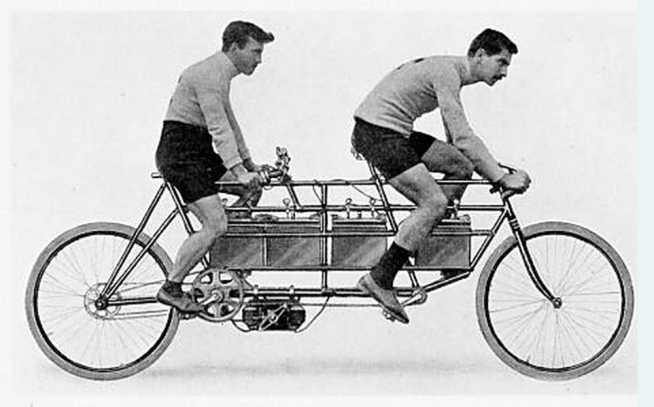
In November 1897, such a two-person electric bicycle named Humber was exhibited at the Stanley Exhibition, which was made by
French developers Clerc and Pingault. On May 22, 1897, French drivers Dacier and Jalabert drove this Humber two-person electric
bike to run 1 kilometer in only 57 seconds, with an average speed of 63km/h, which is really like a miracle.
1898, Mathew J. Steffens electric bicycle with rear wheel and belt drive
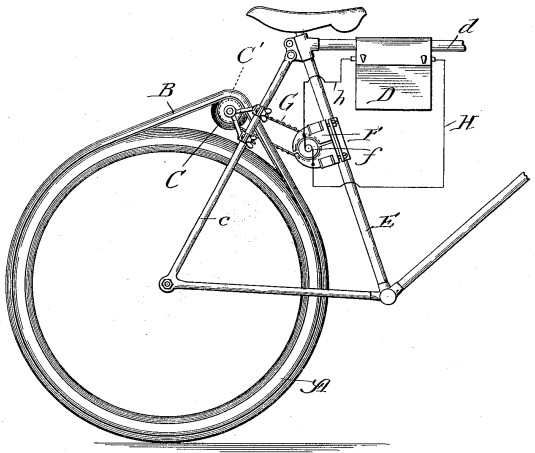
1899, John Schnepf, Friction motor for rear wheels
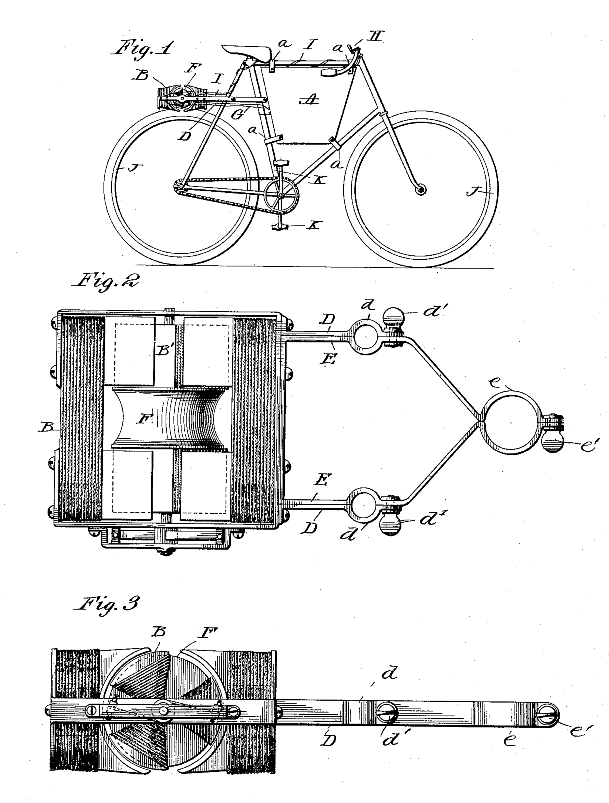
In 1899, John Schnepf registered a friction drive motor for the rear wheels. The principle of action is very simple. The motor is
located in the drum, and the wheel is rotated by friction. The whole assembly can be fixed on the seat tube and seat stay of an
ordinary bicycle through an external cage, and the battery can be installed in the front triangle of the frame. The biggest
advantage is that an ordinary bicycle can be easily converted into a motorcycle. In fact, more than a hundred years later,
similar products are still being introduced to the market with various micro-innovations.
1900, Aebert Hansel, mid-mounted rear-drive electric bicycle
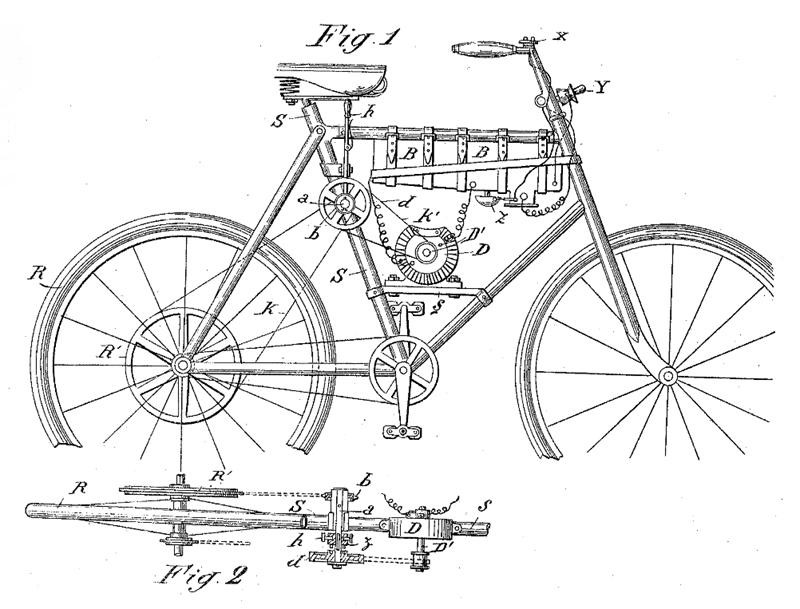
On February 1, 1899, Albert Hansen submitted a patent application called ESNAHA ELECTRIC BICYCLE to the US Patent Office,
which was officially certified in 1900. The motor is installed on the bottom of the front triangle through a fixed base, and the battery
is hung under the upper tube. The kinetic energy output by the motor is transmitted through two-stage deceleration, and finally acts
on the large flywheel on the left side of the rear wheel, thereby driving the rear wheel to rotate. On the right side, the traditional
human-driven components are also completely preserved, which means that even if there is no electricity, it can still pedal forward
like an ordinary bicycle.
1946, Jesse D. Tucker designed an electric bicycle with a motor that can be stored freely
Riders can freely choose manual drive or put the motor down to fit the front wheel to become electric drive.
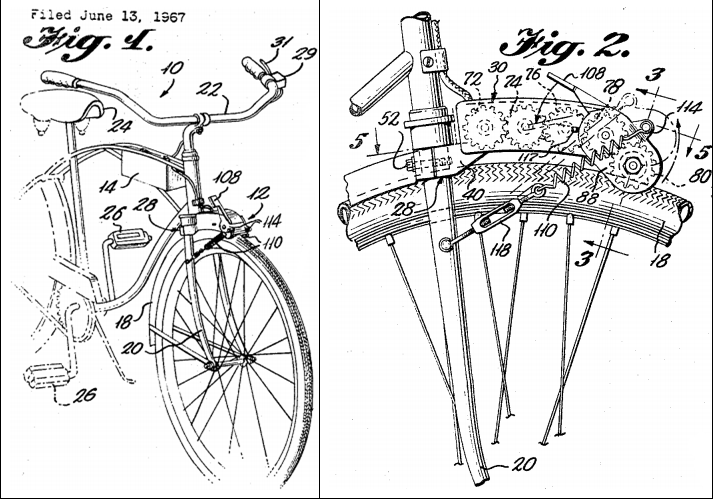
Finally, in 1992, we ushered in the first marketed electric bicycle - Zike.
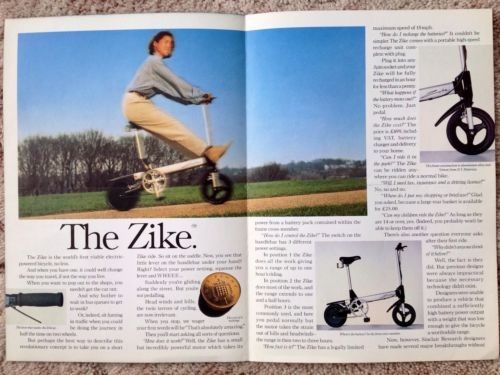
This bike was invented by the famous British inventor Clive Sinclair
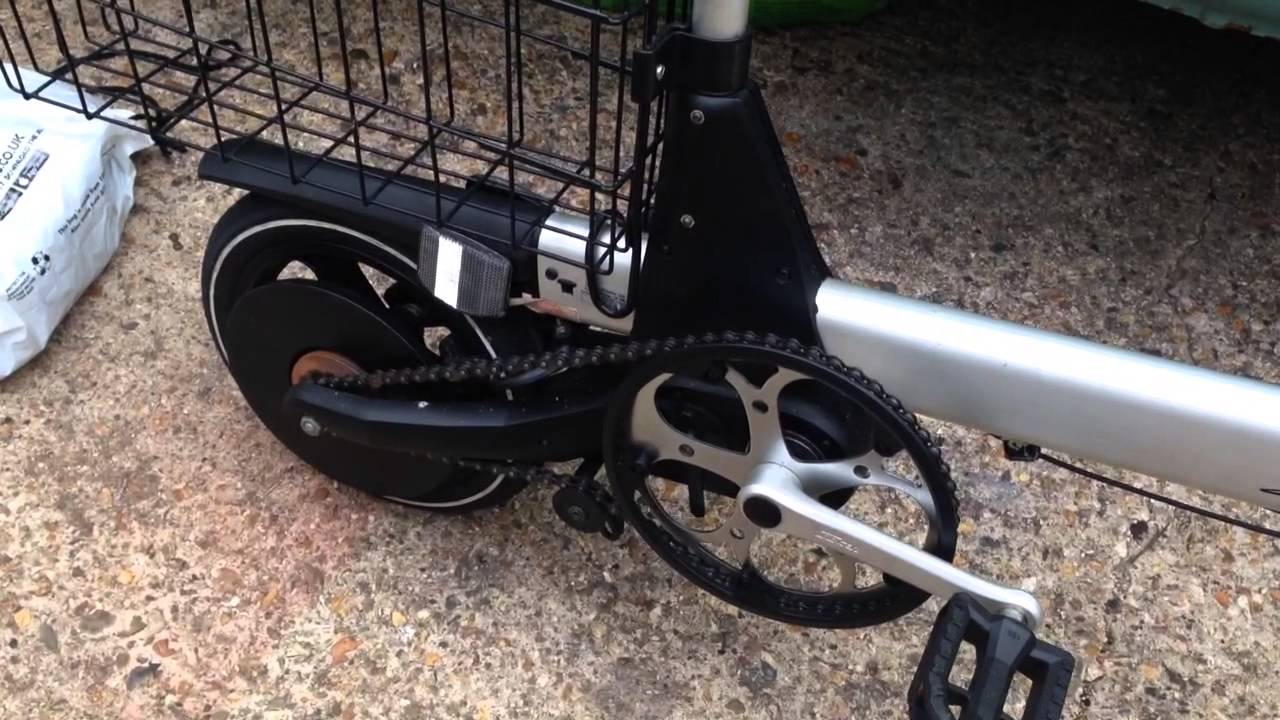
This model was launched at the exhibition that year, and it was given very high expectations. It is expected to sell 10,000 units per month.
But in fact, only 2,000 units were sold in the end, which became a failure.
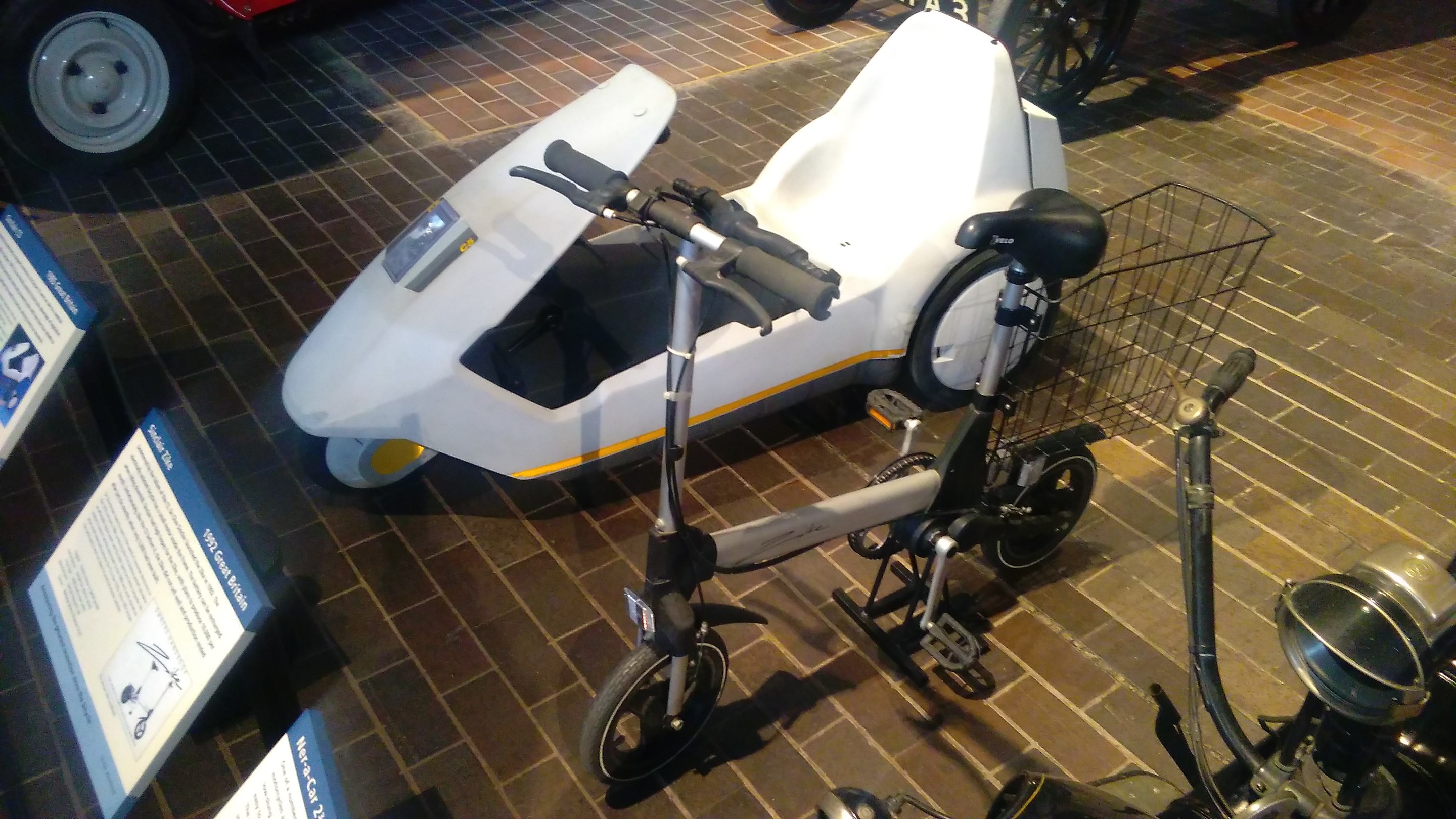
In 1993, Yamaha Japan launched the first crank-driven electric bicycle PAS,
Japan's Yamaha began to develop the "Power Assist System-PAS (Power Assist System)" in the late 1980s, and launched the finished product to the market in 1993. Since then, electric bicycles
have become popular in Japan and gradually spread to the world.
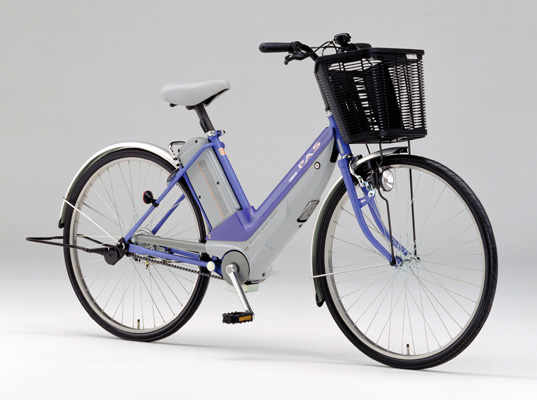
Nowadays, with the progress of science and technology and economic development, the types of electric bicycles are also constantly enriched, and more excellent and avant-garde designs emerge in
an endless stream. Electric bicycles have become a necessary and convenient travel tool for almost every family. In the future, electric bicycles will become personal vehicles. What innovations will there
be? we hope!
View More(Total0)Comment Lists